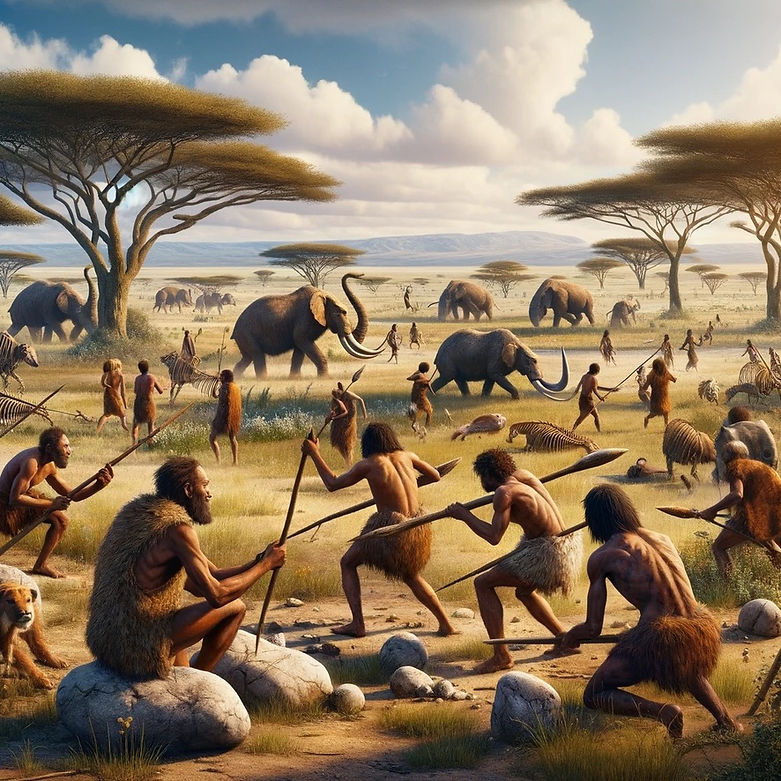

Facultative Carnivore Reasons
This database provides evidence for a hypothesis that humans evolved into facultative carnivores, a type of omnivore that thrives off an all-meat diet, but can survive on fallback foods like gathered plants. We would expect a roughly herbivorous diet with our Last Common Ancestor of Chimpanzees, between 6-10 million years ago. It may have been somewhat bipedal and somewhat arborial. What caused it to evolve to have some many different charactistics compared to other apes? One possibility is that early humans hunted small prey in forests and scavenged for meat on savannahs, increasing the amount of animal protein and fat in their diets. Perhaps persistence running played a role in allowing us to capture megafauna that run away, while tool enhancement, traps, and cooperation allowed us to capture and eat the largest megafauna. We may have targeted the "prime adults" at best seasonal opportunity when animals are known to carry more fat. We could characterize ourselves as omnivores, facultative carnivores, carnivores, apex carnivores, lipivores who nutritionally thrive on a high-fat (60-85% calories), moderate protein (15-35% calories), zerocarb (less than 5% calories, as low as 0 grams/day), zero fiber (0 grams/day), low linoleic acid (2-5% total calories), high omega balance ( total n-3 pufa / total pufa * 100).
However, we do find evidence of increasing plant consumption, especially since the dawn of agriculture, which have led to certain genetic changes that may have made us better omnivores than facultative carnivores. That said, the bulk of our evolution history appears to be under a carnivorous context, so using carnivore diets today may lead to fewer evolutionary mismatches. So the hypothesis is focused on hypercarnivorous diets that led to the best health, whereas hypocarnivorous diets allow survivability, but increase chronic disease in various ways, and have become necessary as megafauna access was wiped out over thousands of years.
Topics: Genetics, Human Evolution, Comparative Anatomy, Animal Fat, Megafauna, Hunting, Stone Tools, Nutrition, Saturated Fat
For a more recent but also more general view of this evidence, subscribe to:
https://www.reddit.com/r/Meatropology
Click on the Red buttons to open more information about the reason, including a details section with important parts of science papers that allude to the hypothesis.
essential-nutrients
Title:
A carnivore diet can provide all essential nutrients
Abstract:
Purpose of review: The aim of this study was to summarize current contributions affecting knowledge and predictions about the nutritional adequacy of plant-free diets, contextualized by historical accounts.
Recent findings: As demonstrated in recent experiments, nutrient interactions and metabolic effects of ketogenic diets can impact nutritional needs, sometimes resulting in nutrient-sparing effects. Other studies highlight conflicting hypotheses about the expected effect on metabolic acidosis, and therefore mineral status, of adding alkaline mineral-rich vegetables.
Summary: A carnivore diet is a newly popular, but as yet sparsely studied form of ketogenic diet in which plant foods are eliminated such that all, or almost all, nutrition derives from animal sourced foods. Ketogenic diets are already nutritionally controversial due to their near-complete absence of carbohydrate and high dietary fat content, but most ketogenic diet advocates emphasize the inclusion of plant foods. In this review, we discuss the implications of relying solely on animal sourced foods in terms of essential nutrient status.
Hypothesis
It seems that a carnivore diet can provide all essential nutrients.



